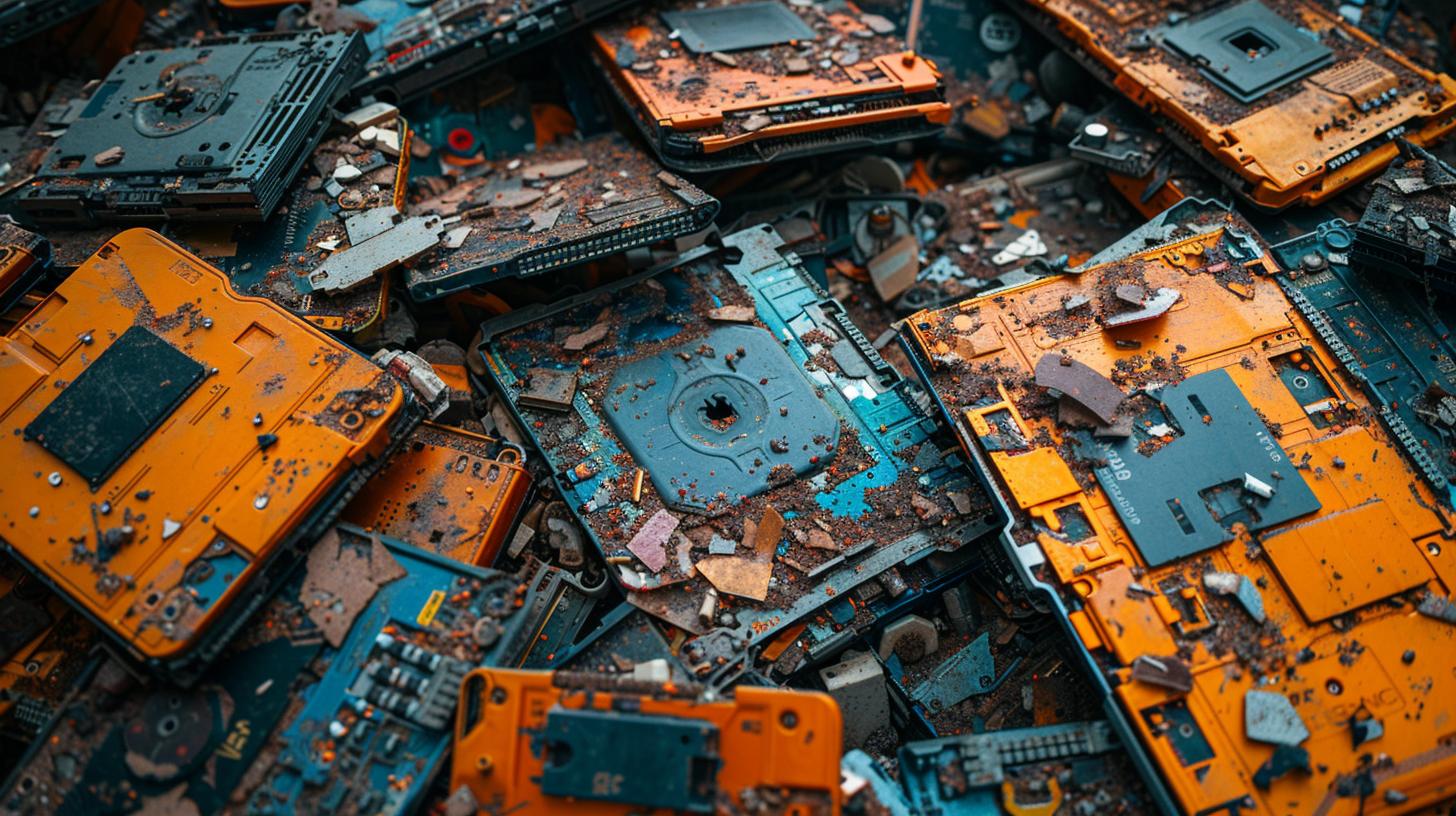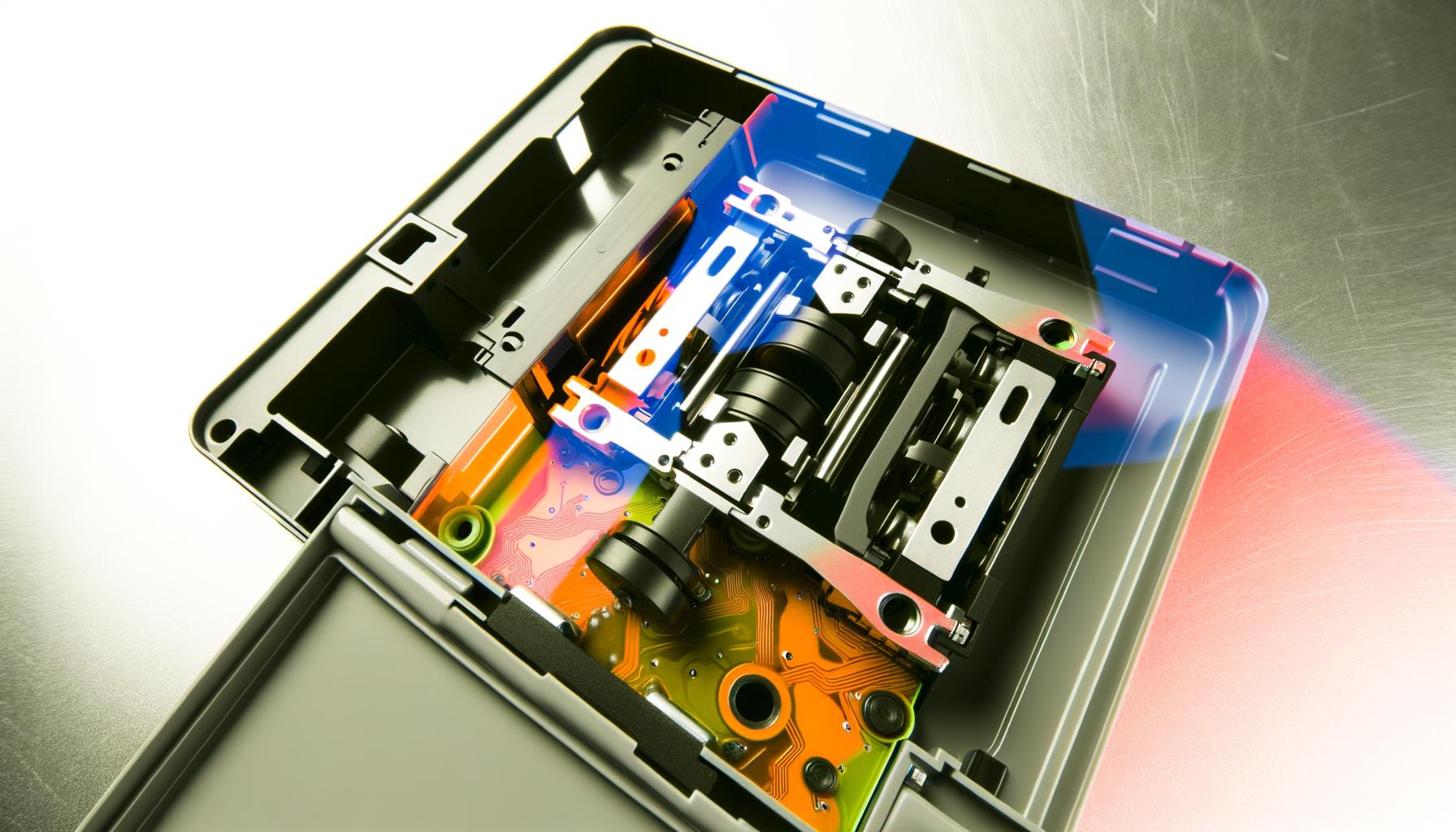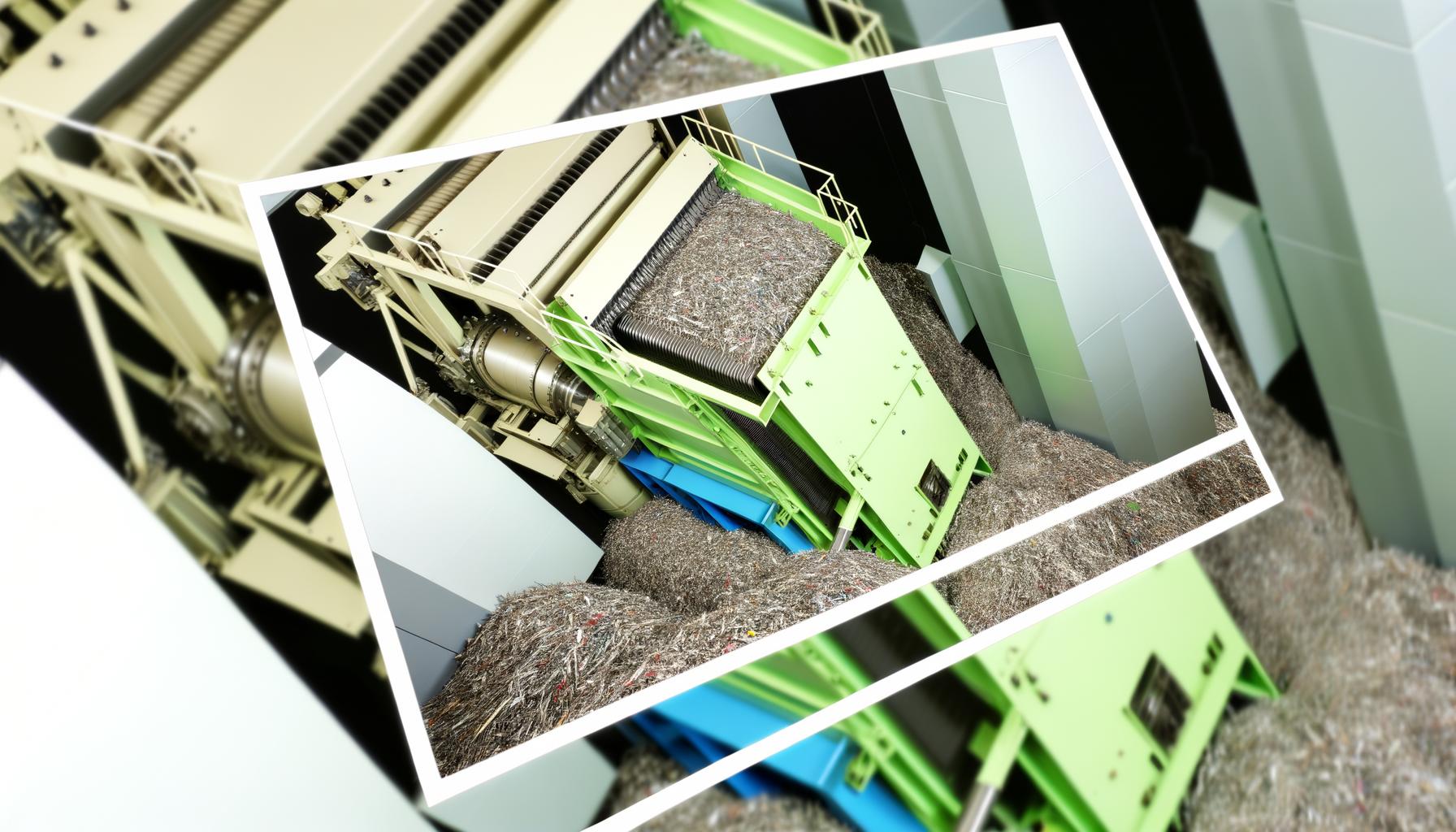In a digitally-driven world, managing and safeguarding information has transcended basic utility to become a pivotal aspect of contemporary business practices. With certified data destruction taking the forefront within this realm, its integration into compliance strategies is not just recommended but essential. The rapid proliferation of technology and corresponding data generation necessitates a profound understanding of digital landscapes-where the sanctity of data privacy cannot be overstated.
The demand for stringent compliance in various industries is escalating at an exponential rate, driven by mounting concerns over personal and corporate information security. These concerns are amplified by high-profile data breaches that underline the relevance of reliable data protection measures. Consequently, enterprises across sectors are experiencing a compelling call to action-to align their operations with established privacy norms and regulatory frameworks.
Data destruction is frequently perceived as a final step in the lifecycle of information management, yet its influence permeates entire compliance efforts. An overview of this cornerstone process lays the groundwork for appreciating how it intersects with legal requirements and industry standards. Delving into certified data destruction sheds light on a meticulous avenue for ensuring that once valuable assets do not transform into liabilities due to improper handling or disposal, affirming its crucial role in today’s compliance landscape.
What Is Certified Data Destruction?
Certified data destruction refers to the formal process of destroying data storage devices and the information contained within them in a manner that is absolute, irreversible, and in accordance with specific industry standards or certifications. This process extends far beyond simple deletion or formatting, as these basic functions often leave data recoverable with the right tools.
The distinction between standard deletion methods and those used for certified data destruction is critical, particularly when handling sensitive and confidential information that could have legal or privacy implications if mishandled.
There are several key differences between regular data wiping or deleting and professional data destruction services. Simple file deletion or disk formatting does not completely remove the information; instead, it merely hides the data from the operating system’s immediate view, making it seem like it’s gone but leaving it vulnerable to recovery by skilled individuals using specialized software.
In contrast, certified data destruction services might employ techniques that physically damage the storage medium itself or use advanced overwriting processes that replace the original data with random gibberish repeatedly until retrieval becomes implausible.
- Physical Destruction: This can involve shredding hard drives into tiny pieces, crushing them so they cannot be spun up again, or even incinerating media to ensure no trace of the original data remains.
- Degaussing: This demagnetizes magnetic media such as hard drives and tapes, rendering their stored data incomprehensible.
- Data Wiping: Specialized software is used to overwrite existing information with meaningless patterns of 1s and 0s multiple times so that the original information cannot be restored even with expert recovery tools.
The entities responsible for setting certifications offer seals of approval indicating that an organization adheres to certain best practices when destroying data. These standards can include specific methods of destruction, requirements for documentation of the process, and regular audits by third-party organizations to maintain accountability.
Being able to present proof of certified data destruction can play a vital role in compliance strategies-for example, under regulations like GDPR-and deliver peace of mind to all stakeholders involved that any sensitive material has been handled responsibly and according to legal obligations.
The Legal Landscape
Data privacy has become a cornerstone of legal frameworks around the world, with various regulations emphasizing the importance of secure data handling and disposal. Among these, notable pieces of legislation such as the General Data Protection Regulation (GDPR), Health Insurance Portability and Accountability Act (HIPAA), and Sarbanes-Oxley Act have set robust standards for how personal and sensitive information should be treated.
- The GDPR, primarily affecting entities within the European Union, requires organizations to implement appropriate technical and organizational measures to ensure data is processed securely. This includes stipulations for when data must be erased in a process called ‘the right to be forgotten’.
- HIPAA applies to healthcare organizations in the United States and mandates safeguards for protecting health information, which encompasses proper disposal methods upon no longer being necessary.
- The Sarbanes-Oxley Act covers financial record keeping and presents requirements on storing and destroying those records securely.
When businesses adhere to certified data destruction protocols, they are better equipped to comply with these regulations. Certified data destruction assures that the dismantling of data is thorough and irreversible. It involves third-party verification processes that scrutinize the means by which electronically stored information is erased or destroyed. This certification indicates compliance with not only general industry practices but also specific legal requirements that call for demonstrable evidence that data has been irretrievably destroyed.

Failure to follow stringent regulatory demands for data destruction can yield severe penalties for businesses, including hefty fines, legal prosecution, and significant damage to their reputation among consumers and partners. It’s essential for companies handling personal or sensitive information to understand these legal obligations fully:
- Non-compliance can invite direct financial penalties as outlined within each regulation; this includes fines that can amount up to millions of dollars depending on jurisdiction and severity.
- Legal consequences may extend beyond fines – businesses could face investigations or forced operational changes resulting from audits or breaches exposed by regulatory authorities.
- Indirect consequences encompass loss of customer trust, brand devaluation, and negative publicity which may far outweigh immediate financial penalties.
Engaging in certified data destruction services is thus not merely a measure of good practice; it’s an integral component of meeting statutory obligations across diverse jurisdictions while safeguarding against both direct legal challenges as well as indirect commercial fallout.
Certified Data Destruction Methods and Processes
Understanding Data Destruction Techniques
Certified data destruction involves a series of methods to securely and permanently remove data from electronic storage devices. It’s essential not just to delete files but also to ensure that the data cannot be recovered by any means. The most common techniques used by certified professionals include degaussing, physical shredding, and incineration. Degaussing is the process of using a high-powered magnet to disrupt the magnetic field in storage media, rendering the data unreadable.
This method is particularly effective for magnetic tapes and hard drives. On the other hand, physical shredding entails cutting, grinding, or milling devices into small pieces such that recovery is impossible. This ensures that information cannot be pieced back together under any circumstances. Incineration offers an extreme level of destruction where electronic media are exposed to high temperatures until they melt or burn completely.
Advantages of Professional Services Over Standard Practices
Using certified methods of data destruction offers several advantages over standard practices such as formatting or using a DIY approach to deletion. Certified data destruction guarantees that all remnants of data are irreversibly destroyed, which goes beyond merely deleting files or performing a factory reset-measures which leave the door open for potential data recovery using specialized software tools.
Professionals in certified data destruction leverage industry-leading techniques and follow stringent procedures that adhere to international standards for secure data handling and disposal. Additionally, these service providers operate with tools calibrated specifically for contemporary storage technologies ensuring efficiency in eradication processes.
The Assurance of Complete Data Annihilation
In today’s digital age, complete data annihilation is critical for maintaining compliance with various privacy laws and regulations; this is what makes the certified process distinct. Certified data destruction does not only imply physically demolishing the hardware but also includes a suite of protocols followed before, during, and after the physical process takes place to ensure no possibility of recovery exists.
These protocols usually involve chain-of-custody documentation, surveillance while operations are carried out, and issuing certificates detailing every aspect of how media was destroyed-spelling relief for businesses concerned about confidential information leaks post-disposal.
Choosing certified providers guarantees peace of mind through a third-party verified process capable not only in handling current forms but adaptable against future emerging media types-all overseen within secure environments specially designed against unauthorized access both physically and digitally. Thus investing in certified data destruction services culminates in robust compliance structures well-aligned alongside modern regulatory demands.
The Role of Certified Data Destruction in Risk Management
In an increasingly digitized world, the security and privacy of confidential information are paramount. Certified data destruction plays a significant role in risk management by ensuring that sensitive data is completely eliminated and beyond recovery. For most organizations, this process is not just about disposing of obsolete hardware; it’s about protecting their brand reputation and maintaining customer trust. The repercussions of poor data hygiene can be severe, including financial penalties, loss of business, and irreversible damage to reputation.

Data breaches and leaks have serious consequences for both businesses and their customers. Personal information, trade secrets, financial records-all carry a risk if they fall into the wrong hands. Certified data destruction services provide companies with peace of mind knowing that their redundant data is destroyed in a manner that is secure and compliant with industry regulations.
Such services also keep companies abreast with evolving privacy laws which demand stringent measures be taken to safeguard personal information. Furthermore, they serve as a critical component in incident response strategies; should a data breach occur, certified destruction helps limit exposure by demonstrating adherence to best practices in data management.
Incorporating certified data destruction into an organization’s risk management plan comes down to acknowledging the real possibility of security threats. The reliance on electronic storage means traditional approaches to document disposal are obsolete.
Modern-certified destruction techniques such as degaussing-where magnetic fields destroy digital information-and physical shredding or incineration leave no avenue for data recovery. This fosters confidence not only within the organization but also among its stakeholders who expect high standards for the protection of sensitive information.
| Data Destruction Method | Benefit |
|---|---|
| Degaussing | Quickly erases magnetic media making recovery impossible. |
| Physical Shredding | Physically destroys hard drives/media into small particles. |
| Incineration | Completely consumes optical media leaving no trace behind. |
By ensuring certified destruction protocols are followed through every step from collection to disposal, companies can effectively reduce their liability risks while adhering strictly to regulatory requirements.
Selecting a Certified Data Destruction Provider
When it comes to dealing with sensitive information, finding a trustworthy certified data destruction provider is crucial for businesses aiming to stay compliant with regulatory standards. Entrusting your data destruction needs to a reliable provider will not only ensure legal compliance but also protect your organization’s reputation. From assessing certifications and standards to asking the right questions, there are several vital steps a company must take before selecting a service partner.
Certifications and Standards Compliance
Top on the list when choosing a certified data destruction provider is their adherence to established industry standards and possession of relevant certifications. A reputable provider should be compliant with norms such as the National Institute of Standards and Technology (NIST) guidelines, have ISO 27001 certification for information security management, or adhere to specific regulations like the Health Insurance Portability and Accountability Act (HIPAA) for healthcare-related data.
These certifications assure that the provider meets rigorous procedural and security standards for the safe handling and destruction of data.
Moreover, providers should be well-versed in various international regulations if you operate across borders; this includes being knowledgeable about General Data Protection Regulation (GDPR) requirements for organizations handling EU citizens’ data. Checking whether a provider follows industry-specific standards can also offer additional confidence that they understand your particular data protection needs.
Evaluating Provider Reputation and Experience
The reputation of a potential data destruction service is another critical factor. Research their market presence, history of client partnerships, and case studies showcasing their expertise. Not all providers may have experience in your specific sector; therefore, it’s important to verify if they have handled similar types of sensitive information as your organization requires.
In today’s digital world where reviews and feedback are readily available online, check client testimonials or ask for references directly from the provider. Insight into how they’ve managed projects in the past can help forecast your experience with them. Additionally, inquire about their process – from initial custody of materials through the final certificate issuance – so that you know what level of detail and care they apply throughout every step.
The Importance of Verification: Certificate of Destruction
After ensuring that the vendor adheres to necessary certifications and has an impeccable reputation backed by experience, it’s important to understand what kind of verification you’ll receive once your data has been destroyed. One key document is the certificate of destruction which provides evidence that your materials have been securely rendered unreadable.
Ask prospective providers detailed questions about what their certificates entail. The documentation should include precise details such as date and method of destruction, witnessed confirmation (if applicable), serial numbers, and assurance that destroyed materials cannot be reconstructed or retrieved in any form post-process – demonstrating true certified data destruction adherence.
These records not only give you peace-of-mind but are also crucial should any legal question arise regarding compliance with privacy laws-acting as proof that all obligations relating to secure disposal were met according to standardized protocols.

Conclusion
As we look closely at the digital horizon, it’s clear that data protection and the compliance landscape are set to evolve even further. Legislative bodies around the world continue to tighten regulations in response to increasing security breaches and growing public concern over privacy. In this shifting environment, certified data destruction emerges not merely as a best practice but as an essential component of legal and ethical business operations.
In the years ahead, we can anticipate advancements in certified data destruction technologies and methods, shaped by innovation and driven by necessity. As cyber threats grow more sophisticated, so must our defenses.
Enhanced methods of destruction that provide even greater security assurances are likely to become standard offerings from providers specializing in this critical service. As part of this trend toward sophistication, transparency will become increasingly important; businesses will demand comprehensive audit trails and certifications that validate the complete eradication of their sensitive information.
The significance of certified data destruction is only going to intensify in the digital age. With more devices connected to the Internet than ever before-each one a potential gateway for data leakage-the need for secure data disposal strategies is unequivocal. Companies will be called upon to incorporate rigorous destruction protocols into their policies, ensuring they remain compliant while safeguarding their reputation and the trust of their customers.
Ultimately, certified data destruction will stand as a key pillar in organizational risk management frameworks worldwide. Its role in fortifying companies against legal repercussions cannot be understated. As global attention on personal privacy rights continues to surge, businesses that stay ahead of these trends-and partner with reputable certified data destruction providers-will navigate future challenges confidently, setting standards for others to follow in responsible data stewardship and compliance adherence.
Frequently Asked Questions
What Is Certified Data Destruction?
Certified data destruction is a process in which digital data is irreversibly destroyed and wiped from storage devices. This process is conducted following strict industry standards and results in a certification that confirms the complete and secure elimination of all data, ensuring that it cannot be reconstructed or retrieved.
How Do I Get a Certificate of Data Destruction?
To obtain a certificate of data destruction, you need to use the services of a professional data destruction company that holds relevant certifications. These companies typically offer documentable proof of secure destruction after the service has been carried out, which comes in the form of a Certificate of Data Destruction detailing what was destroyed, how, and when.
What Is the Meaning of Certified Destruction?
The meaning of certified destruction refers to the confirmation provided by an authoritative body indicating that items or information have been destroyed to established standards. It assures that sensitive materials such as hard drives, documents, or products have been thoroughly disposed of in compliance with legal and regulatory requirements.
What Is Considered Data Destruction?
Data destruction consists of processes aimed at completely erasing or destroying electronic data so it cannot be recovered or accessed again. It includes physical methods like shredding hard drives or electronic methods such as using software to overwrite existing data on storage devices multiple times until it’s unrecoverable.
How Does Data Destruction Work?
Data destruction works by either physically destroying the media that holds the data or by employing software-based methods that securely overwrite data with random patterns until recovery becomes impossible, even with advanced forensic technology. Physical destruction can include shredding, crushing, or incineration while software-based methods are referred to as wiping or degaussing.
Why Is a Certificate of Destruction Important?
A certificate of destruction is important because it serves as proof that confidential information has been securely destroyed according to recognized standards. It protects organizations legally by recording due diligence in preventing unauthorized access to sensitive information during disposal processes and helps ensure compliance with privacy laws and regulations.
What Is a Certificate of Destruction and How Long Should It Be Kept?
A certificate of destruction is an official record indicating that specific information has been effectively destroyed in accordance with certain standards and protocols. Its retention period depends upon both legal requirements and corporate policies but typically should be kept for several years as part of an organization’s audit trail regarding its adherence to compliance regulations.
What Are the Three Approved Methods of Document Destruction?
The three approved methods of document destruction are shredding, burning (incineration), and pulping. Shredding involves cutting documents into very small pieces so they are unreadable; burning reduces them to ash; pulping means the documents are converted into a slurry mixture which makes reconstructing them impossible – ensuring confidentiality maintenance for sensitive papers.




